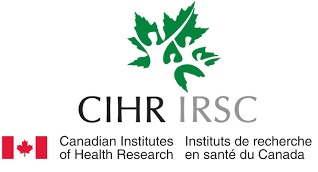SARV
Small Area Variation
Principal Investigator:
听
The Small Area Variation (SARV) is a program of research that was developed in response to Department of Health and Wellness (DHW) priorities. This program of research has been supported by the Maritime SPOR Support Unit (MSSU), the Department of Health and Wellness (DHW), the Nova Scotia Health Authority (NSHA), the Canadian Institutes of Health Research (CIHR), and the Nova Scotia Health Research Foundation (NSHRF). The findings form the first SARV project were that the high-cost users of health care, most of whom have chronic conditions and complex needs, are concentrated in different communities across the province. We created maps showing the high and low user communities. More importantly, this program of research is working to understand the reasons why this happens. For example, in some communities we would expect high costs because they have an aging population with many chronic diseases. Yet some communities still have high or low concentrations, even after we account for these causes. We want to learn why, and use what we learn to improve our approaches to support the development of local innovation and targeted interventions at the community level, ultimately to improve our care. All projects include case-mix adjustment for demographics and chronic conditions, as well as any adjustments specific to the project.听
Completed projects
Small Area Rate Variation in Rates of High-Cost Healthcare Use Across Nova Scotia
Research team: George Kephart (PI), Yukiko Asada, Frank Atherton, Frederick Burge, Leslie Anne Campbell, Meredith Campbell, Laura Dowling, Jonathan Dyer, Beverley Lawson, Lynn Lethbridge, Adrian Levy, Mikiko Terashima
Description: This is the first SARV project, and was funded by the MSSU in response to a request from the Nova Scotia DHW. This project assessed geographic variation in the prevalence and characteristic of high-cost users of health care (inpatient hospital and physical costs) among Nova Scotia communities. Health care costs included were inpatient hospital and physician costs. This project found that the top 5% of high-cost healthcare users account for two thirds of costs, and that improving the effectiveness and efficiency of health care for high-cost healthcare users would have a significant impact on costs to the province. It also found that these high-cost healthcare users were clustered in communities across the province. For the full report, click here
Small Area Variation in Unplanned Repeat Hospitalizations in Nova Scotia
Research team: Mike Reid (Student PI), George Kephart (Supervisor), Pantelis Andreou, Tara Sampalli, Rick Gibson, Jonathan Ross
Description: Inpatient hospitalizations accounted for most of the costs of high-cost users identified in the original SARV work. A negative health system outcome contributing to inpatient hospitalization costs is unplanned repeat hospitalizations. This project, funded by the MSSU, aimed to estimate the variation in time to an unplanned repeat hospitalization across communities in Nova Scotia. The findings from this project support the findings of the original SARV work, where some communities are associated with significantly higher or lower rates of unplanned repeat hospitalizations. As well, some communities identified as having higher rates of unplanned repeat hospitalization corresponded to communities identified in the original SARV work as having higher rates of high-cost healthcare users. For more information click
The Effect of Community of Discharge on Length of Stay for Unplanned Hospitalizations: An Indicator of Community Care Integration?
Research team: Alysia Robinson (Student PI), George Kephart (Supervisor), Leslie Anne Campbell (Supervisor), Pantelis Andreou, Grace Warner, David Stock, Mike Reid
Description: A companion to the unplanned, repeat hospitalization work; this project looks at another contributor to inpatient hospitalizations costs: length of stay in hospital. This project, funded by the MSSU, aimed to estimate the extent of community variation in hospital length of stay for unplanned hospitalizations, and if this variation is different for patients based on the complexity of their health needs. The findings from this project also support the findings of the original SARV work, as well its companion project. There were communities found to be associated with significantly longer or shorter hospital lengths of stay, and three communities were identified in all three works as having higher rates of high-cost healthcare users, unplanned repeat hospitalizations, and longer lengths of stay.
听
Ongoing projects
A Systems Approach to Improve the Care and Reduce the Resource Requirements of Patients with Complex Needs
Research Team: George Kephart (NPI), Lynn Edwards (Co-PI), Alexandra Carter, Jan Jensen, Tanya Packer, Richard Gibson, Grace Warner, Ruth Matin-Misener, Tara Sampalli, Judah Goldstein, Steven Carrigan, Leslie Anne Campbell, Erin Christian, Daniel Marsh, Frederick Burge, Beverly Lawson, Lisa Grandy, America Keddy, Mike Reid, Alysia Robinson
Description: This project secured NSHRF funding to incorporate data from Emergency Health Services (EHS), as well as data on low-income drug programs, to further understand reasons for the burden of high-cost healthcare use on the healthcare system. It aims to describe, among high-cost healthcare users in Nova Scotia, utilization of ambulance services and enrollment in low-income drug program enrollment, and how these vary between communities.
Estimating and Mapping Urban Differences in Health Outcomes for Adults with Chronic Disease in Canada
Research Team: George Kephart (NPI), Pantelis Andreou (Co-PI), Daniel Dutton, John Knight, Paul Peters, Mikiko Terashima, Marry-Ann MacSwain, Mike Reid, Alysia Robinson, Kylie Peacock
Description: This project secured CIHR funding with an aim to extend the SARV work to all of Canada. It aims to estimate, and map rates of high-cost hospital use and unplanned hospitalizations of individual urban neighborhoods and communities across Canada, differentiating the contribution of socioeconomic determinants, chronic disease prevention and chronic disease management on those outcomes.
Assessing the Effect of Primary Care Models and Access on Unplanned, Repeat Hospitalizations Across Communities in Nova Scotia
Research Team: George Kephart (NPI), Emily Marshall (Co-PI), Mike Reid, Charmaine McPherson, Lynn Edwards, Tara Sampalli, Rick Gibson, Gail Blackmore, Melissa Andrew, Maria Mathews, Alysia Robinson, Kylie Peacock
Description: This project secured CIHR funding with an aim to describe differences in the characteristics of primary care models used by residents of communities that have higher and lower rates of negative health system outcomes (unplanned repeat hospitalizations, unplanned hospitalizations, high-cost healthcare use, high-cost hospital use). Information on primary care will come from Dr. Emily Marshall鈥檚 Models and Access Atlas of Primary Care (MAAP) work. We examine the extent to which community variation in the risk of these negative health system outcomes is influenced by the characteristics of the primary care models serving that population.
Funding Sources:
听
 听听
听听  听听
听听 

